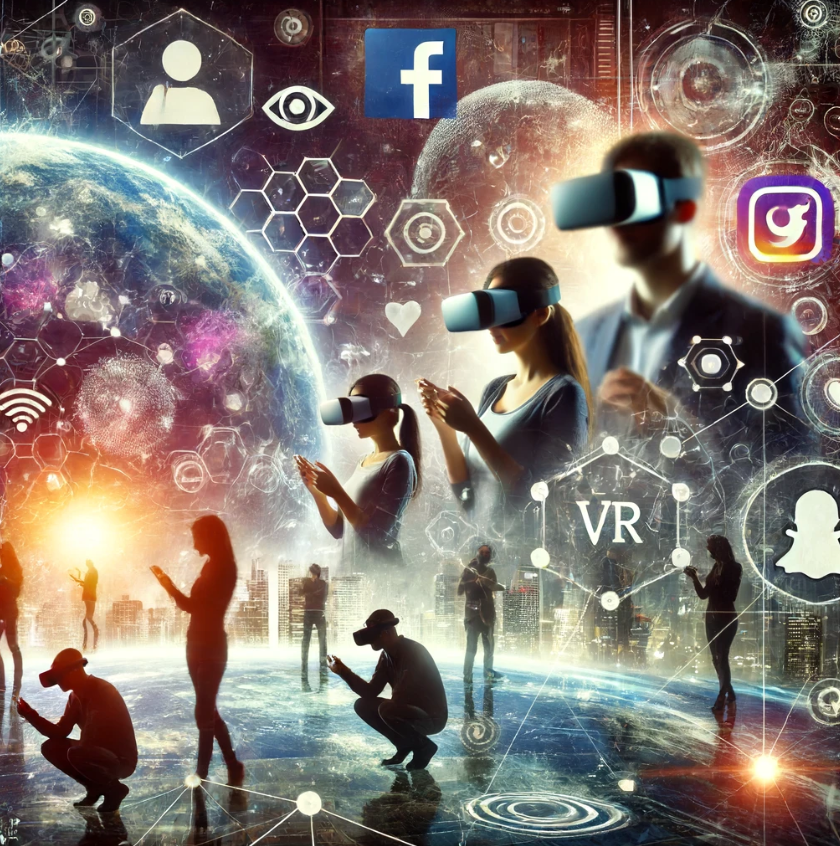The Intersection of Social Media and Virtual Reality: Future Trends
1. Introduction: The New Digital Frontier
The convergence of social media and virtual reality (VR) is creating an exciting new frontier in digital interaction. As VR technology becomes more accessible and sophisticated, it offers unprecedented opportunities for social media platforms to revolutionize the way we connect, share, and experience content. This intersection promises to redefine social media engagement, making it more immersive and interactive than ever before.
2. Immersive Social Experiences
Virtual reality transforms social media from a two-dimensional experience into an immersive three-dimensional world. Users can now step into virtual environments, interact with friends as avatars, and participate in shared activities in real-time. This shift is not just a technological advancement but a fundamental change in how we perceive and engage with social media.
3. Enhancing Content Creation
The integration of VR into social media opens up new possibilities for content creation. Brands and influencers can create immersive experiences, such as virtual tours, 360-degree videos, and interactive storytelling, that captivate audiences in entirely new ways. To fully leverage these opportunities and stay ahead of the curve, consider partnering with Multipost Digital for expert guidance and innovative content strategies.
4. Virtual Shopping and Marketing
VR is poised to revolutionize the way we shop and interact with brands online. Virtual stores allow customers to browse and purchase products in a simulated environment, enhancing the shopping experience with realistic visuals and interactive features. This trend is set to become a staple in digital marketing, offering brands a unique way to engage customers and drive sales.
5. Building Virtual Communities
Social media platforms in VR are fostering the creation of virtual communities, where users can gather, socialize, and share experiences in immersive spaces. These virtual communities offer a sense of presence and connection that traditional social media cannot match, paving the way for deeper and more meaningful interactions.
6. Live Events and Experiences
Virtual reality enables the hosting of live events and experiences that users can attend from anywhere in the world. Concerts, conferences, and meet-and-greets can be held in virtual spaces, offering attendees an immersive and engaging experience. Multipost Digital can help you navigate this new landscape and create compelling VR events that captivate your audience.
7. Education and Training
The educational potential of VR on social media is immense. Virtual classrooms and training sessions offer interactive and engaging ways to learn and develop new skills. This application of VR is particularly beneficial for professional development, providing hands-on experience in a controlled, immersive environment.
8. Data Privacy and Security
As social media platforms integrate VR, ensuring data privacy and security becomes increasingly important. Users must trust that their personal information and virtual interactions are protected. Companies will need to implement robust security measures and transparent policies to safeguard user data in this new digital realm.
9. The Role of AI in VR Social Media
Artificial intelligence (AI) plays a crucial role in enhancing the VR social media experience. AI-driven algorithms can personalize content, recommend virtual experiences, and facilitate interactions within virtual spaces. This synergy between AI and VR will lead to more tailored and engaging social media experiences.
10. Conclusion: Embracing the Future
The intersection of social media and virtual reality is set to transform the way we connect and interact online. As these technologies continue to evolve, they will unlock new possibilities for engagement, entertainment, and education. To stay updated with the latest trends and insights in VR and social media, follow Multipost Digital on our social media accounts and be part of the future of digital interaction.


